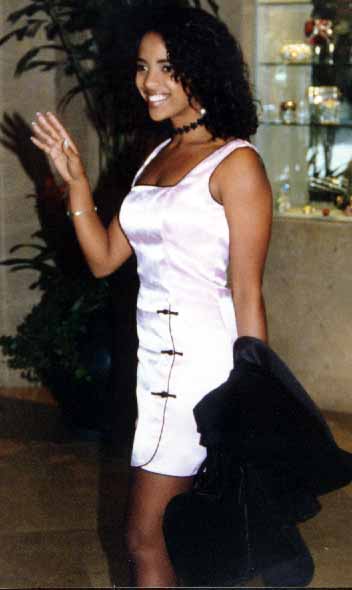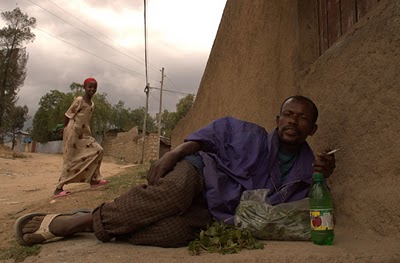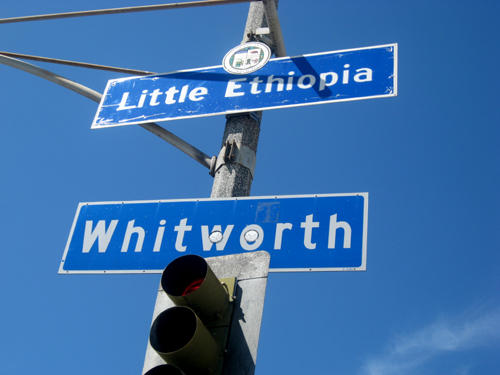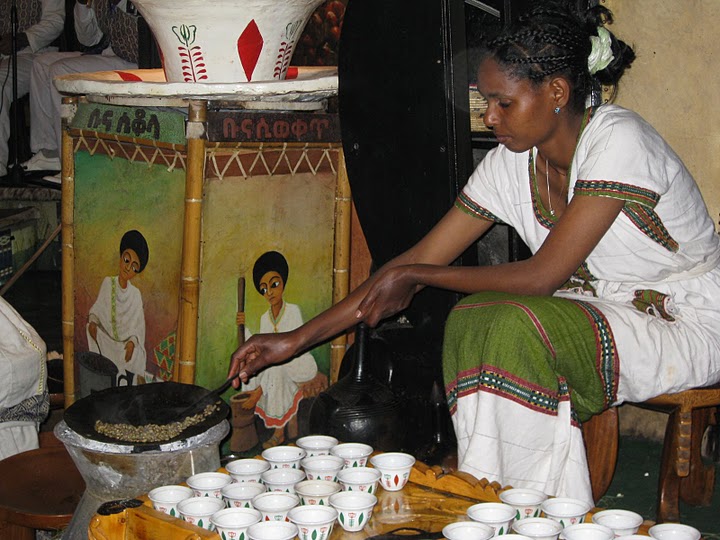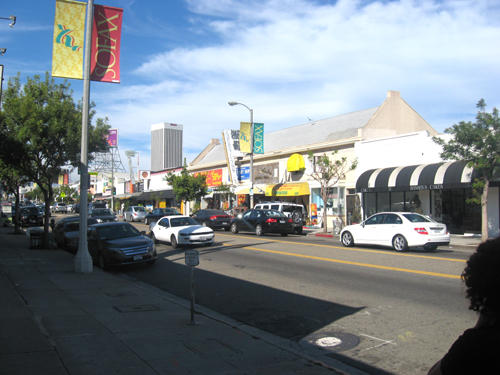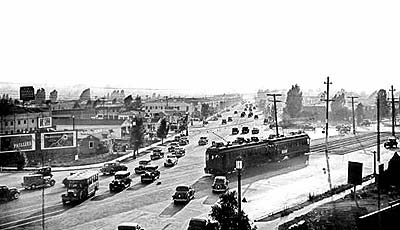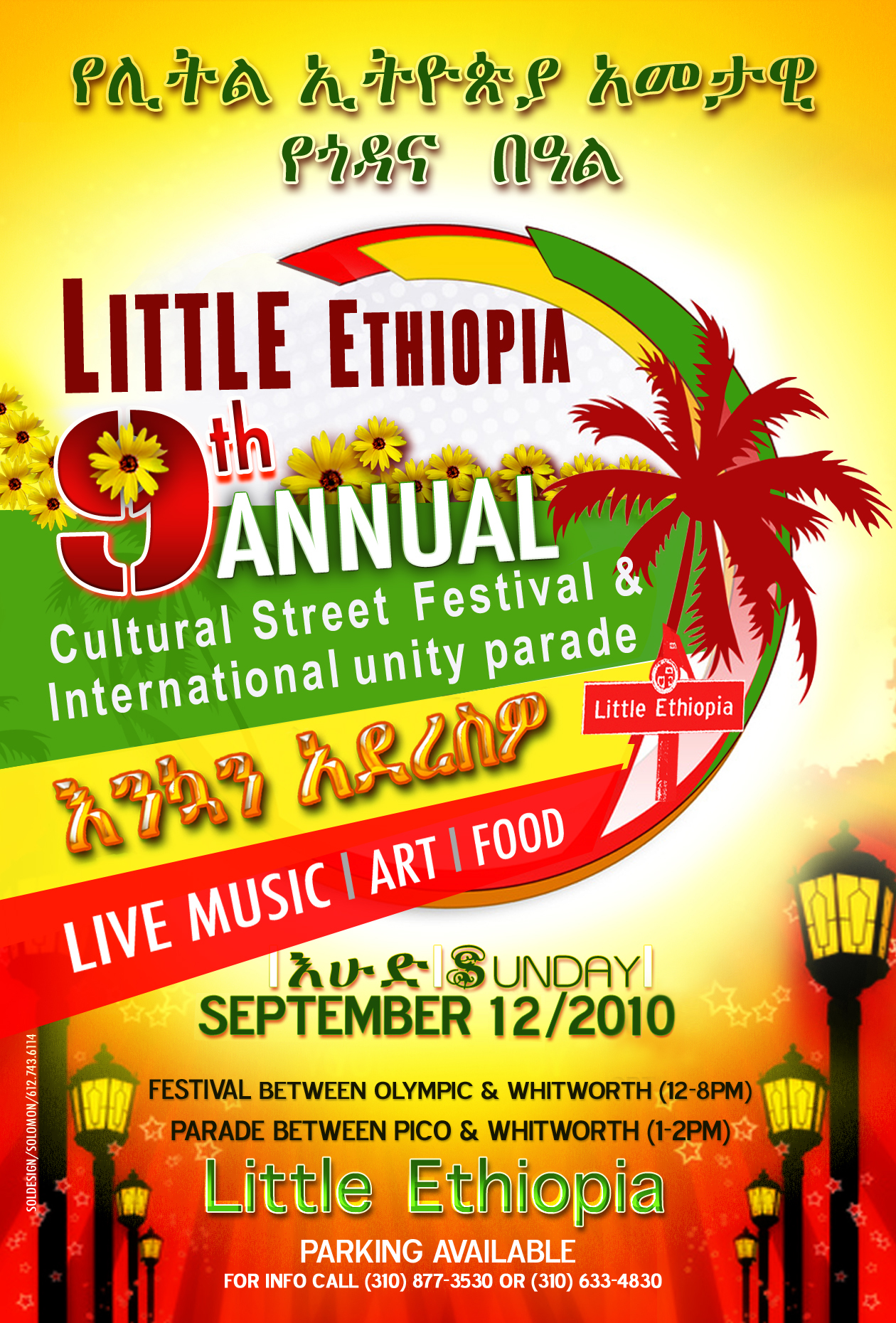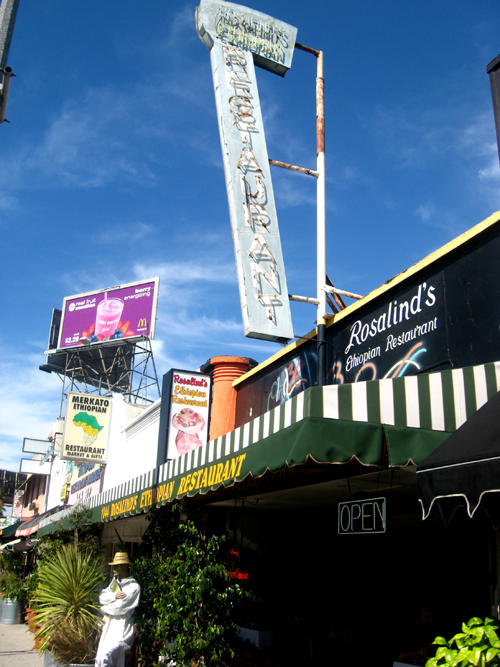 | Little Ephiopia, Fairfax |
|
|
|
|
|
|
|
|
|
So Fax |
Olympic and San Vicente boulevards at Fairfax Avenue |
|
|
|
EARLY CARTHAY HISTORY
The area that is now Los Angeles'' Midtown area spent several thousand years as Tongva land. It was later conquered by Spain, claimed by Mexico and subsequently invaded by the US. Even after the discovery of oil in the area in the 1890s, the area between Los Angeles and the Pacific coast remained largely undeveloped pasture and farmland until the 1907 opening of the Port of Los Angeles and the 1913 completion of the Los Angeles Aqueduct, which both made large scale industrialization possible
Development of Carthay began in 1922, when J. Harvey McCarthy began building along the San Vicente Boulevard line of the Pacific Electric Railway. The area south of Olympic was developed in 1933, by Spyros George Ponty. Like much of LA, Carthay was originally off limits to non-whites. In the 1920s, the area around Brooklyn and Soto in Boyle Heights was home to the largest number of Jews west of the Mississippi. After the conclusion of World War II, many of Los Angeles'' whites moved to the suburbs. At the same time, Jews began to flock to Fairfax, which was nicknamed "Kosher Canyon" and "The Bagel District." The area south of Olympic was known, less colorfully, as "SoFax." There aren''t currently statistics available only strictly for Carthay Square or Little Ethiopia, but today the greater Carthay District is approximately 58% white (mostly Jewish and Russian), 16% Latino (mostly Mexican), 9% Asian (mostly Korean) and 13% black... largely Ethiopian.
Los Angeles is home to large numbers of African-American immigrants. The main populations are Egyptian, Ethiopian, Nigerian, Moroccan and South African. For whatever reason, the only African immigrant populations to cluster together in tightly-knit ethnic enclaves are Ethiopian. The first Ethiopians visited the US after the coronation of Emperor Haile Selassie in 1930, who sent young Ethiopians to study abroad (although not to Los Angeles
THE RED TERROR
Ethiopian immigration increased in the early 1970s, after the USSR began arming, and Cuban soldiers began assisting Ethiopian communists in their war against Selassie. In 1974, Lt. Col. Mengistu Haile Mariam toppled the government. Emperor Selassie died on August 22, 1975 -- allegedly strangled in the basement of his palace. In the midst of this disarray, Eritrea continued its struggle for independence and in 1977, Somalia attacked. A period of repression, torture and murder of perceived enemies of the government followed, in what became known as "The Red Terror." Hundreds of thousands of Ethiopians "disappeared." Many others fled the country, mainly to Khartoum, Sudan. The first significant numbers of Ethiopians immigrated to Los Angeles at the same time. However, whereas the passage of the Immigration and Nationality Act of 1965 most significantly raised the cap on the number of Asians allowed to immigrate to the US, it did nothing for Africans. It''s telling that, of all the Southland''s ethnic enclaves (Cambodia Town, Chinatown, Historic Filipinotown, The Korean District, Koreatown, Little Arabia, Little Armenia, Little Bangladesh, Little India, Little Osaka, Little Saigon, Little Taipei, Little Tokyo, Tehrangeles and Thai Town), all but Little Ethiopia represent groups from Asia
Little Ephiopia
http://www.ethiopianreview.com/content/29243
Hictory of a community
Watch
